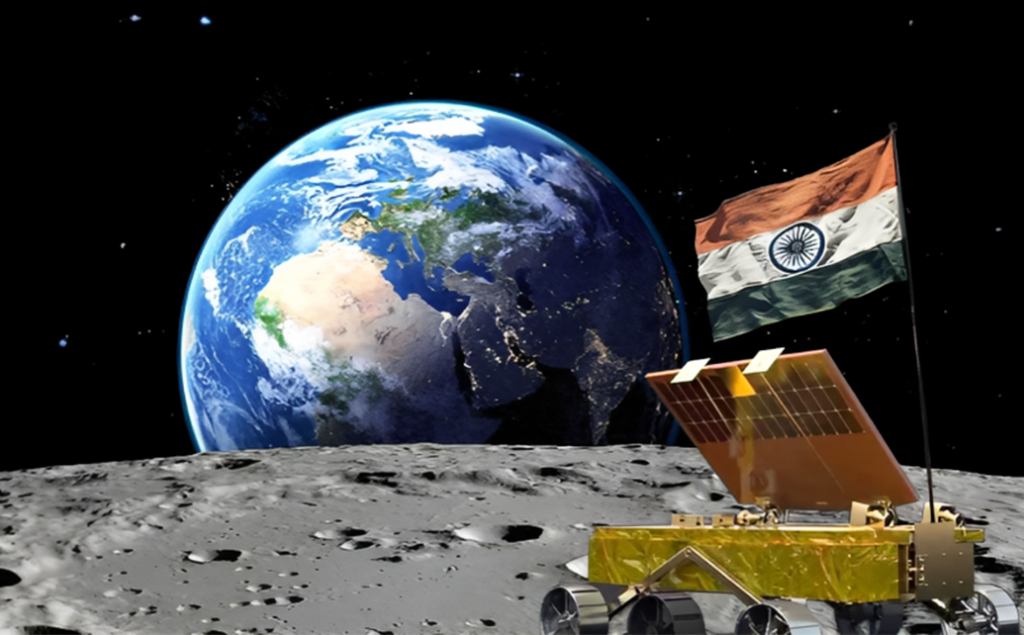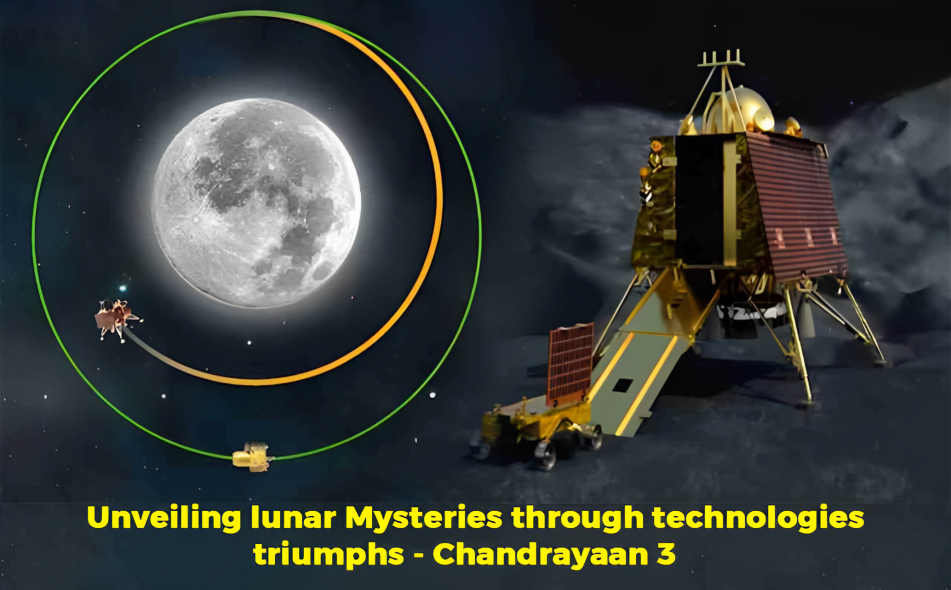Chandrayaan-3, India’s ambitious lunar exploration mission, stands as a testament to the country’s ever-growing prowess in space technology. Building upon the accomplishments of its predecessor, Chandrayaan-2, this follow-on mission aims to demonstrate cutting-edge capabilities in safe landing, roving, and conducting in-situ scientific experiments on the lunar surface. The mission’s components include an indigenous Lander module (LM), a Propulsion module (PM), and a Rover, collectively working to unlock the mysteries of the Moon.
At the heart of Chandrayaan-3 lies its objective of developing and showcasing new technologies required for interplanetary missions. The Lander, a remarkable piece of engineering, possesses the capability to execute a soft landing at a predetermined lunar site. Once on the lunar surface, it deploys the Rover, which embarks on a journey of in-situ chemical analysis of the lunar terrain. Both the Lander and Rover are equipped with scientific payloads that will conduct experiments, contributing valuable insights to our understanding of the Moon.
The Propulsion Module (PM) plays a pivotal role in the mission’s success. It is responsible for ferrying the Lander module from its launch vehicle injection until it reaches the final lunar orbit of 100 km, which is circular and polar. Once in the designated orbit, the Lander separates from the PM. This module, in addition to its crucial role, also boasts a scientific payload known as the Spectro-polarimetry of Habitable Planet Earth (SHAPE). This advanced tool is designed to study Earth from the lunar orbit by measuring its spectral and polarimetric characteristics.

Chandrayaan-3’s mission objectives are threefold:
Safe and Soft Landing: One of the primary aims of this mission is to demonstrate the ability to perform a safe and soft landing on the lunar surface. This requires the implementation of sophisticated technologies like altimeters based on lasers and radio frequency (RF), velocimeters including the Laser Doppler Velocimeter, and the Lander Horizontal Velocity Camera. Additionally, the mission employs inertial measurement systems based on laser gyros, accelerometers, and a propulsion system featuring throttleable liquid engines and attitude thrusters.
Rover Roving: The mission will showcase the capabilities of lunar roving, whereby the Rover traverses the lunar terrain to carry out in-situ chemical analysis. This aspect of the mission involves Alpha Particle X-ray Spectrometers (APXS) and Laser-Induced Breakdown Spectroscopy (LIBS) tools for determining the elemental composition of the lunar vicinity.
In-situ Scientific Experiments:
Chandrayaan-3’s scientific payloads include a diverse range of instruments designed to conduct experiments on the lunar surface. For instance, Chandra’s Surface Thermophysical Experiment (ChaSTE) measures thermal conductivity and temperature, the Instrument for Lunar Seismic Activity (ILSA) studies seismic activity, and Langmuir Probe (LP) estimates plasma density variations. Additionally, a passive Laser Retroreflector Array from NASA aids in lunar laser ranging studies.
The mission’s preparation and testing process are equally remarkable. Rigorous testing, such as integrated cold tests and integrated hot tests, ensures the functionality of key sensors, navigation systems, and control mechanisms. Lander leg mechanism performance tests on a lunar simulant test bed simulate various touchdown conditions, providing valuable insights for a successful landing.
Chandrayaan-3’s technological innovation extends to its launch vehicle as well. The GSLV-Mk3 launcher is chosen for its capacity to place the integrated module in an Elliptic Parking Orbit (EPO) of approximately 170 x 36500 km, a crucial step before the lunar journey.
Chandrayaan-3 represents India’s unwavering commitment to space exploration and technology development. Through its advanced Lander, Propulsion, and Rover modules, the mission aims to demonstrate safe landing, lunar roving, and scientific experimentation on the Moon’s surface. With an array of cutting-edge technologies, meticulous testing procedures, and an ambitious set of objectives, Chandrayaan-3 stands as a shining example of India’s strides in the field of space exploration.

